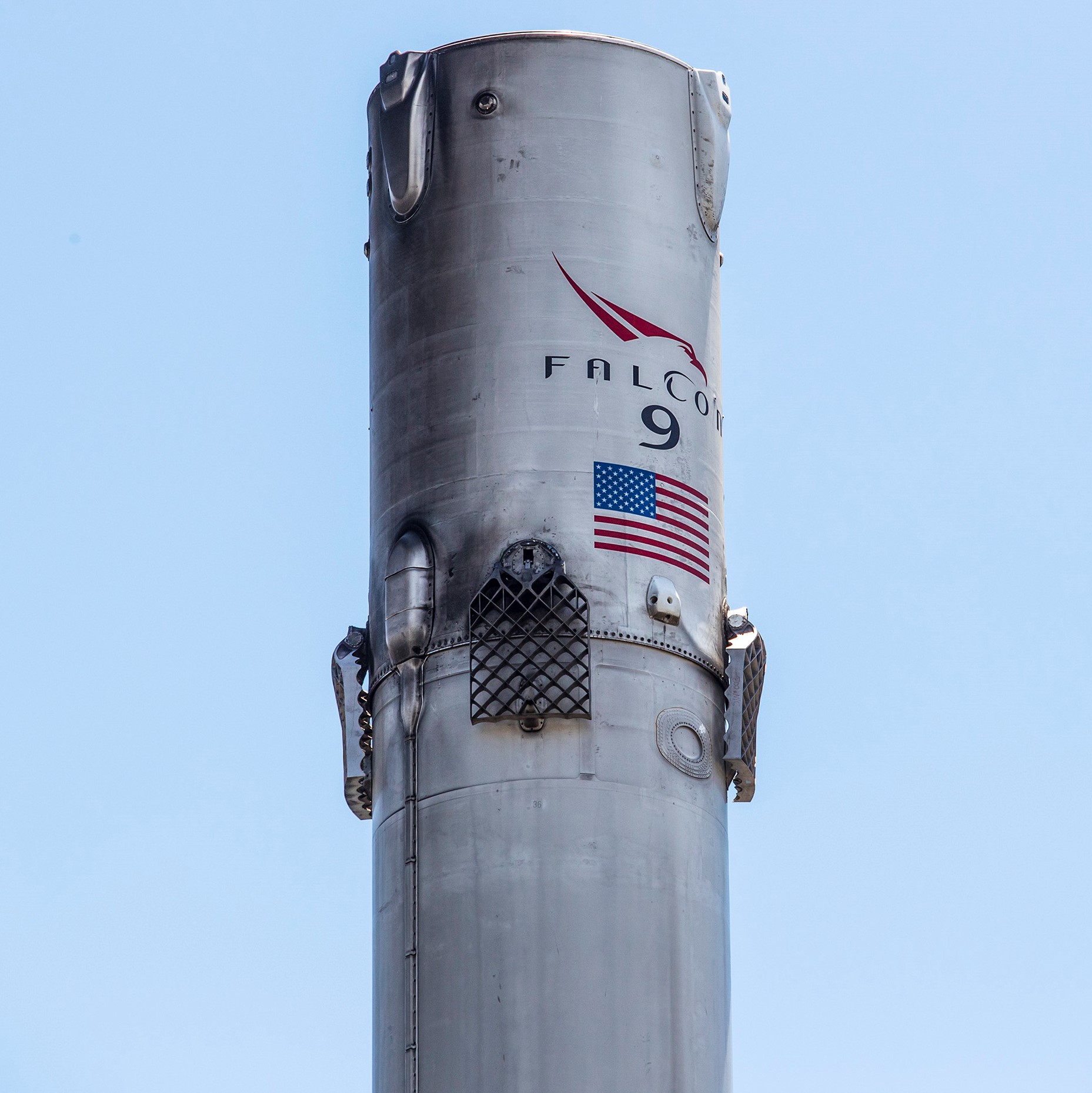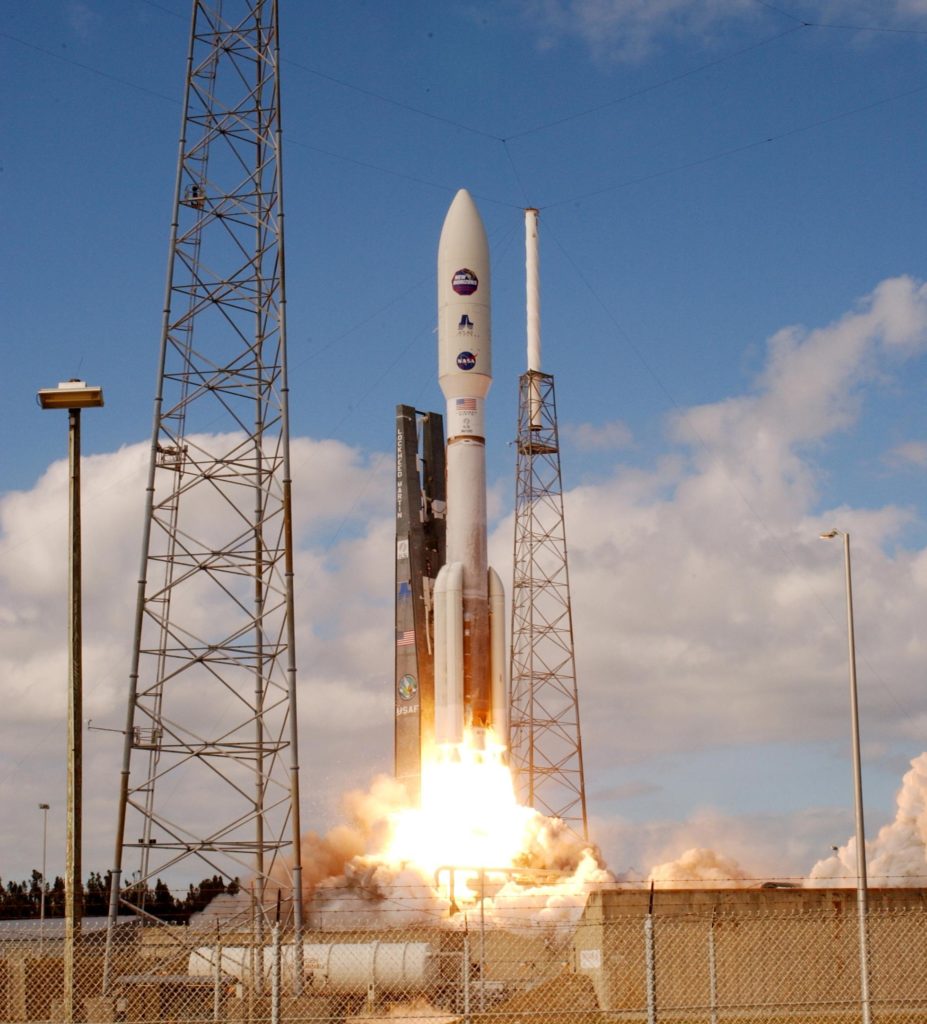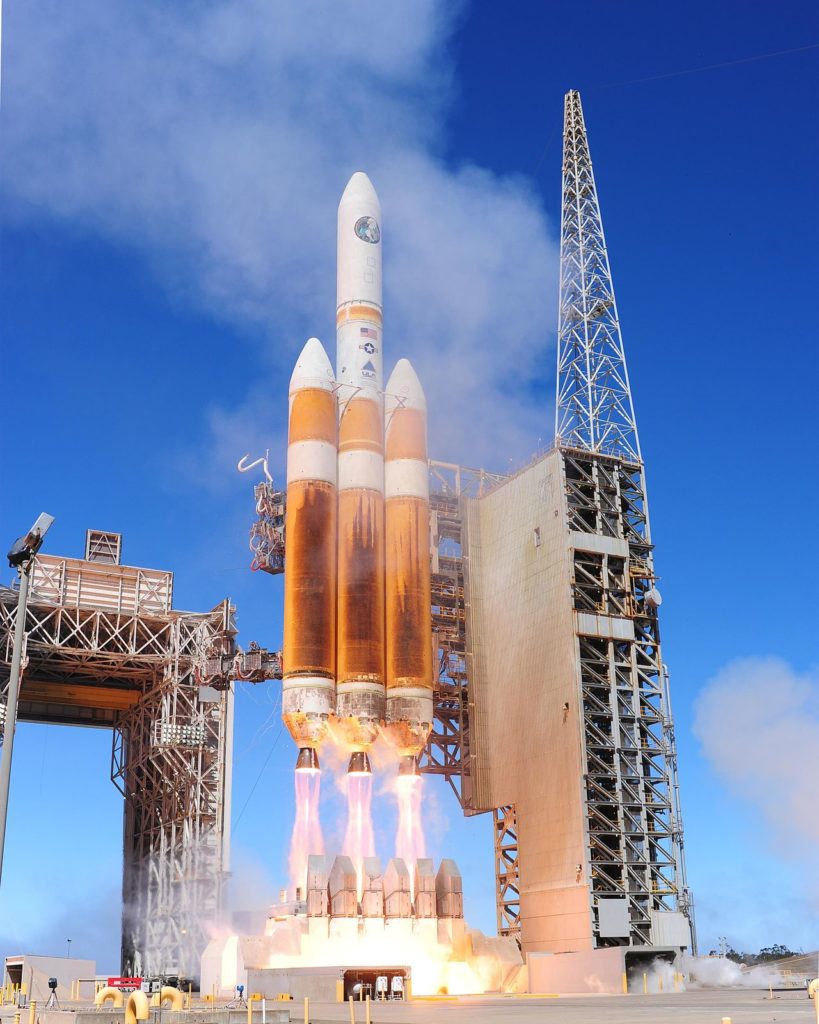

News
Musk calls out SpaceX rival for receiving billion dollar subsidy, ULA head fires back
Following an intriguing SpaceX testimony before Senate committees in Washington D.C., Musk took to Twitter to share some thoughts on the state of the launch marketplace and SpaceX’s place within it. It didn’t take long for him to relate a somewhat common critique of the United Launch Alliance, SpaceX’s only American competition.
Sorry. That is simply not true. There is no "billion dollar subsidy". Amazing that this myth persists.
— Tory Bruno (@torybruno) July 14, 2017
Other orgs shd also develop reusable orbital rockets. If an airplane co had reusable airplanes, buying single use airplanes wd seem crazy. pic.twitter.com/OJotlGmPHt
— Elon Musk (@elonmusk) July 13, 2017
Tory Bruno, President and Chief Executive of ULA, responded with gloves off just a few hours later, deeming the implied existence of such a subsidy nothing more than a “[persistent] myth”. He spent fifteen or so minutes replying to skeptical and inquisitive followers on Twitter, stating that the Wikipedia paragraph on the subject was incorrect. Bruno was steadfast in his response saying that he had publicly testified on the public procurement process before Congress (he did, and he did not defer on the term “subsidy”), and he adamantly refused to back down on his statement that such a subsidy only existed in mythology.
For better or for worse, Bruno is correct to a large extent. In fact, he published a full editorial on the controversial subject in the canonical SpaceNews Magazine. The ELC (EELV (Evolved Expendable Launch Vehicle) Launch Contract) is the source of this controversy, and while not quite a full billion dollars, the FY2016 ELC contract was for $860 million.
SpaceX has admittedly been chronically doubted and mistreated in the realm of government contracting, and ULA has been less than perfectly civil in the past. Simply by existing, SpaceX in effect disrupted what was a American launch industry monopoly held between Boeing and Lockheed Martin. Those two companies merged their space endeavors approximately 11 years ago and have since been the United Launch Alliance. For reasons that do make a bit of sense but are still mildly obtuse, the United States Air Force chose to purchase ULA launch vehicles and the services that make the launch of those vehicles possible separately. The main given reason for this choice, as explored in Bruno’s editorial, is to give the Air Force added flexibility.
As discussed in the 2016 ELC contract itself, another large need for this type of funding lies in the maintenance of a large workforce, and the constant depreciation of both the Atlas and Delta families of launch vehicles. The Delta family, known mainly for the large Delta IV Heavy, is almost never utilized at this point in time, with Atlas being both more cost effective and more reliable. Regardless, due to contracting, ULA is required to maintain both the workforce and facilities necessary to produce and launch Delta vehicles, in spite of having nearly no “business” thanks to Atlas V. Maintaining a workforce and set of facilities that is in part or whole redundant is not efficient or cost-effective, but it is contractually required. So, while the ELC contract Musk deemed a nearly pointless subsidy does have some major flaws, inefficiencies, and illogical aspects, it is not technically correct to label it a subsidy.
- Operated by the same company responsible for the F-35, Atlas 5 is a highly reliable and equally expensive rocket. (ULA)
- Delta IV Heavy, the only current American heavy lift launch vehicle in service. Once operational, Falcon Heavy will be capable of launching nearly double the payload to GTO. (USAF/ULA, 2013)
Without the actual contract information, it is also difficult to know if ULA would still receive this contractual payment in lieu of conducting actual launches. Bruno frames it in such a way that it sounds like the U.S. government modifies the payment size based on the number and type of required launches for a given year. If the multi-year agreement means that launches delayed many months or more can still be swapped out at no additional charge, then this does indeed make a certain amount of sense. The array of discussion on the subject nevertheless fails to explore the consequences of launch provider-side issues, the likes of which ULA and Atlas 5 experienced earlier this year, resulting in some amount of delays.
We do that too, but for free
— Elon Musk (@elonmusk) July 13, 2017
While there can be no doubt that the actual gritty details of the ELC contracts deal explicitly with such possible outcomes, the lack of transparency (be that as a result of publicly inaccessible contract details or highly obtuse and lingo-heavy contract language) ultimately frames ELC contracts and the vehemence with which ULA defends them as a wasteful, overly complex, and unnecessary alternative to simply offering a fixed product with services inherently included, as SpaceX does.
Elon Musk
Tesla reveals it is using AI to make factories more sustainable: here’s how
Tesla is using AI in its Gigafactory Nevada factory to improve HVAC efficiency.

Tesla has revealed in its Extended Impact Report for 2024 that it is using Artificial Intelligence (AI) to enable its factories to be more sustainable. One example it used was its achievement of managing “the majority of the HVAC infrastructure at Gigafactory Nevada is now AI-controlled” last year.
In a commitment to becoming more efficient and making its production as eco-friendly as possible, Tesla has been working for years to find solutions to reduce energy consumption in its factories.
For example, in 2023, Tesla implemented optimization controls in the plastics and paint shops located at Gigafactory Texas, which increased the efficiency of natural gas consumption. Tesla plans to phase out natural gas use across its factories eventually, but for now, it prioritizes work to reduce emissions from that energy source specifically.
It also uses Hygrometric Control Logic for Air Handling Units at Giafactory Berlin, resulting in 17,000 MWh in energy savings each year. At Gigafactory Nevada, Tesla saves 9.5 GWh of energy through the use of N-Methylpyrrolidone refineries when extracting critical raw material.
Perhaps the most interesting way Tesla is conserving energy is through the use of AI at Gigafactory Nevada, as it describes its use of AI to reduce energy demand:
“In 2023, AI Control for HVAC was expanded from Nevada and Texas to now include our Berlin-Brandenburg and Fremont factories. AI Control policy enables HVAC systems within each factory to work together to process sensor data, model factory dynamics, and apply control actions that safely minimize the energy required to support production. In 2024, this system achieved two milestones: the majority of HVAC infrastructure at Gigafactory Nevada is now AI-controlled, reducing fan and thermal energy demand; and the AI algorithm was extended to manage entire chiller plants, creating a closed-loop control system that optimizes both chilled water consumption and the energy required for its generation, all while maintaining factory conditions.”
Tesla utilizes AI Control “primarily on systems that heat or cool critical factory production spaces and equipment.” AI Control communicates with the preexisting standard control logic of each system, and any issues can be resolved by quickly reverting back to standard control. There were none in 2024.
Tesla says that it is utilizing AI to drive impact at its factories, and it has proven to be a valuable tool in reducing energy consumption at one of its facilities.
Elon Musk
Tesla analysts believe Musk and Trump feud will pass
Tesla CEO Elon Musk and U.S. President Donald Trump’s feud shall pass, several bulls say.

Tesla analysts are breaking down the current feud between CEO Elon Musk and U.S. President Donald Trump, as the two continue to disagree on the “Big Beautiful Bill” and its impact on the country’s national debt.
Musk, who headed the Department of Government Efficiency (DOGE) under the Trump Administration, left his post in May. Soon thereafter, he and President Trump entered a very public and verbal disagreement, where things turned sour. They reconciled to an extent, and things seemed to be in the past.
However, the second disagreement between the two started on Monday, as Musk continued to push back on the “Big Beautiful Bill” that the Trump administration is attempting to sign into law. It would, by Musk’s estimation, increase spending and reverse the work DOGE did to trim the deficit.
Every member of Congress who campaigned on reducing government spending and then immediately voted for the biggest debt increase in history should hang their head in shame!
And they will lose their primary next year if it is the last thing I do on this Earth.
— Elon Musk (@elonmusk) June 30, 2025
President Trump has hinted that DOGE could be “the monster” that “eats Elon,” threatening to end the subsidies that SpaceX and Tesla receive. Musk has not been opposed to ending government subsidies for companies, including his own, as long as they are all abolished.
How Tesla could benefit from the ‘Big Beautiful Bill’ that axes EV subsidies
Despite this contentious back-and-forth between the two, analysts are sharing their opinions now, and a few of the more bullish Tesla observers are convinced that this feud will pass, Trump and Musk will resolve their differences as they have before, and things will return to normal.
ARK Invest’s Cathie Wood said this morning that the feud between Musk and Trump is another example of “this too shall pass:”
BREAKING: CATHIE WOOD SAYS — ELON AND TRUMP FEUD “WILL PASS” 👀 $TSLA
She remains bullish ! pic.twitter.com/w5rW2gfCkx
— TheSonOfWalkley (@TheSonOfWalkley) July 1, 2025
Additionally, Wedbush’s Dan Ives, in a note to investors this morning, said that the situation “will settle:”
“We believe this situation will settle and at the end of the day Musk needs Trump and Trump needs Musk given the AI Arms Race going on between the US and China. The jabs between Musk and Trump will continue as the Budget rolls through Congress but Tesla investors want Musk to focus on driving Tesla and stop this political angle…which has turned into a life of its own in a roller coaster ride since the November elections.”
Tesla shares are down about 5 percent at 3:10 p.m. on the East Coast.
Elon Musk
Tesla scrambles after Musk sidekick exit, CEO takes over sales
Tesla CEO Elon Musk is reportedly overseeing sales in North America and Europe, Bloomberg reports.

Tesla scrambled its executives around following the exit of CEO Elon Musk’s sidekick last week, Omead Afshar. Afshar was relieved of his duties as Head of Sales for both North America and Europe.
Bloomberg is reporting that Musk is now overseeing both regions for sales, according to sources familiar with the matter. Afshar left the company last week, likely due to slow sales in both markets, ending a seven-year term with the electric automaker.
Tesla’s Omead Afshar, known as Elon Musk’s right-hand man, leaves company: reports
Afshar was promoted to the role late last year as Musk was becoming more involved in the road to the White House with President Donald Trump.
Afshar, whose LinkedIn account stated he was working within the “Office of the CEO,” was known as Musk’s right-hand man for years.
Additionally, Tom Zhu, currently the Senior Vice President of Automotive at Tesla, will oversee sales in Asia, according to the report.
It is a scramble by Tesla to get the company’s proven executives over the pain points the automaker has found halfway through the year. Sales are looking to be close to the 1.8 million vehicles the company delivered in both of the past two years.
Tesla is pivoting to pay more attention to the struggling automotive sales that it has felt over the past six months. Although it is still performing well and is the best-selling EV maker by a long way, it is struggling to find growth despite redesigning its vehicles and launching new tech and improvements within them.
The company is also looking to focus more on its deployment of autonomous tech, especially as it recently launched its Robotaxi platform in Austin just over a week ago.
However, while this is the long-term catalyst for Tesla, sales still need some work, and it appears the company’s strategy is to put its biggest guns on its biggest problems.
-

 Elon Musk1 day ago
Elon Musk1 day agoTesla investors will be shocked by Jim Cramer’s latest assessment
-

 News6 days ago
News6 days agoTesla Robotaxi’s biggest challenge seems to be this one thing
-

 News2 weeks ago
News2 weeks agoTesla’s Grok integration will be more realistic with this cool feature
-

 Elon Musk2 weeks ago
Elon Musk2 weeks agoElon Musk slams Bloomberg’s shocking xAI cash burn claims
-

 News2 weeks ago
News2 weeks agoTesla China roars back with highest vehicle registrations this Q2 so far
-

 News2 weeks ago
News2 weeks agoTexas lawmakers urge Tesla to delay Austin robotaxi launch to September
-

 News2 weeks ago
News2 weeks agoTesla dominates Cars.com’s Made in America Index with clean sweep
-

 Elon Musk1 week ago
Elon Musk1 week agoFirst Look at Tesla’s Robotaxi App: features, design, and more
















